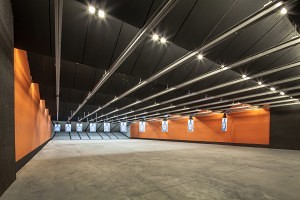 Public relations can be difficult no matter what industry you’re in, but for those who own shooting ranges and gun shops, it can be absolutely terrifying. It seems the majority of news stories about shooting ranges are purely negative and focus on battles over zoning, environmental concerns, community opposition, or violent crime. The media may seem to have complete control over the conversation, but there are things you can do to shed some positive light on your range and the industry in general. If you own a shooting range, work at a shooting range, or you are planning to build one, here are seven tips that will help you overcome the preconceived notions, myths, and fears that surround them.
Public relations can be difficult no matter what industry you’re in, but for those who own shooting ranges and gun shops, it can be absolutely terrifying. It seems the majority of news stories about shooting ranges are purely negative and focus on battles over zoning, environmental concerns, community opposition, or violent crime. The media may seem to have complete control over the conversation, but there are things you can do to shed some positive light on your range and the industry in general. If you own a shooting range, work at a shooting range, or you are planning to build one, here are seven tips that will help you overcome the preconceived notions, myths, and fears that surround them.
#1: Educate your neighbors.
People fear what they do not understand. The majority of the resistance you will experience in building your range is often the product of a lack of understanding from misinformation. A quick online search will show the majority news stories that talk about shooting ranges center on how they create dangerous environments for children and communities because of the presence of guns or the possibility of bullets escaping the confines of the range. Do not be afraid to attend local civic meetings and community events or even go door to door to educate the public about your project and how it will benefit the community as a whole. It is important to be visual and factual in your presentation. Use pictures and graphs to illustrate your points rather than relying solely upon words. Always exercise caution when speaking to the public and local government officials. Before you attempt to communicate openly about your shooting range project, you should conduct or find research to determine the political atmosphere of your community. Depending on potential resistance, keeping a low profile may be the best course of action rather than attacking public perception head on.
#2: Know what makes your range unique.
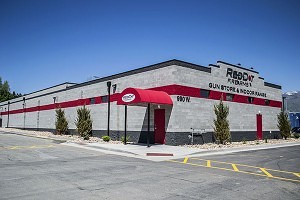 When it comes to the media, it is not enough to say you’re building a “state-of-the-art” shooting range. You need to know what makes you unique from every other range that also claims to be “state-of-the-art.” Look closely at your equipment, business model, history, future plans, and services. Somewhere in those details is an angle that will draw the attention of the media. A great example of this is Eagle Gun Range in Lewisville, Texas. Owner David Prince contacted the media early and often but was met with complete indifference because several shooting ranges had already opened in the area in a fairly short amount of time. After a number of attempts, a reporter finally asked, “What makes you different from all the other ranges?” Prince began listing all the aspects that make Eagle Gun Range so great including safe equipment, training classes, inventory, and events like birthday parties. What caught the reporter’s attention were the events. “Birthday parties? Like, for children?”
When it comes to the media, it is not enough to say you’re building a “state-of-the-art” shooting range. You need to know what makes you unique from every other range that also claims to be “state-of-the-art.” Look closely at your equipment, business model, history, future plans, and services. Somewhere in those details is an angle that will draw the attention of the media. A great example of this is Eagle Gun Range in Lewisville, Texas. Owner David Prince contacted the media early and often but was met with complete indifference because several shooting ranges had already opened in the area in a fairly short amount of time. After a number of attempts, a reporter finally asked, “What makes you different from all the other ranges?” Prince began listing all the aspects that make Eagle Gun Range so great including safe equipment, training classes, inventory, and events like birthday parties. What caught the reporter’s attention were the events. “Birthday parties? Like, for children?”
What followed was a media frenzy. Not only did it catch the attention of the local news agencies, the story also found its way into the national limelight with coverage from ABC News, Yahoo News, Fox Business, U.S. News on NBC, The Blaze, and Guns.com. Even Jimmy Kimmel caught wind of it and featured a skit about the range called “Chuck E Norris” on his show. Obviously, not all of the coverage was positive, but it gave Prince a chance to talk about his range on a public stage and draw enormous attention before the range had even opened.
#3: Talk to the media early and often.
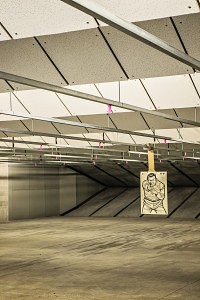 The media does not have to be your enemy. If you help them by providing a story that is newsworthy, they will help you. It is important that you reach out to them early in the process and approach them often. Invite them out to visit your range during different stages of the building process. Explain to them how your bullet trap works and why it is impossible for bullets to escape the range. Show them what makes your range unique. Give them the opportunity to shoot on your range (include both the reporter and the camera operator). Talk about how your range will protect the environment with your lead collection and ventilation systems. The more you get the media to your range, the more you can influence the conversation and educate the public.
The media does not have to be your enemy. If you help them by providing a story that is newsworthy, they will help you. It is important that you reach out to them early in the process and approach them often. Invite them out to visit your range during different stages of the building process. Explain to them how your bullet trap works and why it is impossible for bullets to escape the range. Show them what makes your range unique. Give them the opportunity to shoot on your range (include both the reporter and the camera operator). Talk about how your range will protect the environment with your lead collection and ventilation systems. The more you get the media to your range, the more you can influence the conversation and educate the public.
#4: Host a grand opening event.
Holding a grand opening event is one of the best ways to get the attention of your local community and media. Don’t jump the gun, though. It’s generally best to have an unannounced soft opening with your grand opening celebration taking place a few weeks or even a month later. Delaying the grand opening will give you time to make sure everything works properly, shelves are stocked, and employees are trained. Coordinate with one of the main firearm brands you will carry to be on site during the event to do demonstrations or even hold raffles (if charging for raffle tickets, make sure you follow your state’s gambling laws). You can also draw attention by offering discounts or sales on merchandise, range passes, memberships, etc. Invite notable community members like the mayor and the chief of police and include them in an official ceremony like a ribbon cutting (or ribbon shooting). Once plans have been made, get the word out to the media. Research reporters in your area who would possibly be interested and send them an official invitation two weeks in advance that quickly details what will happen, who will attend, and why it is important. Send the invitation early in the week to avoid traditional end-of-the-week deadlines, and keep it as short as possible.
Hire a professional photographer to be at the event. Photography is often one of the most overlooked aspects of opening a range. Too often, a new shooting range opens and the only available photos are dark and grainy and were taken before construction was even complete on whoever’s cell phone happened to be handy. Invest in a good photographer to document your range and provide you with attractive photos that you can use on your website, in social media, and in the news. The better you can portray your range through photos, the more people will want to come.
#5: Be an expert on all things firearms to the media.
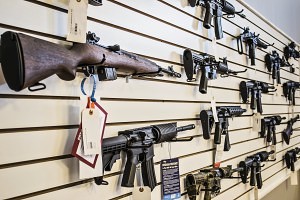 Your range doesn’t have to be the source of the news in order to get into the news. In today’s world, there is no shortage of news stories involving firearms in one way or another. Present yourself as a firearms expert to the media, and they will seek your opinion. Doug VanderWoude, OnTarget Range Manager for AcuSport and former owner of Silver Bullet Firearms, managed to get his range into Time Magazine. It wasn’t because his gun shop/shooting range did anything worthy of national attention but because VanderWoude actively contacted the media and presented himself as an expert in the field. So when Time Magazine began writing an article on booming gun sales, they came knocking at his door first. Merely owning a shooting range does not necessarily qualify you as an expert, however. Make sure you’re up to the task by reading as many publications about the firearms industry from as many different sources possible. Focus on politics, local firearms laws, trends, new products or innovations, and firearms makes and models. The more you can back up your personal experiences with trends and research, the better you will perform as an industry spokesman.
Your range doesn’t have to be the source of the news in order to get into the news. In today’s world, there is no shortage of news stories involving firearms in one way or another. Present yourself as a firearms expert to the media, and they will seek your opinion. Doug VanderWoude, OnTarget Range Manager for AcuSport and former owner of Silver Bullet Firearms, managed to get his range into Time Magazine. It wasn’t because his gun shop/shooting range did anything worthy of national attention but because VanderWoude actively contacted the media and presented himself as an expert in the field. So when Time Magazine began writing an article on booming gun sales, they came knocking at his door first. Merely owning a shooting range does not necessarily qualify you as an expert, however. Make sure you’re up to the task by reading as many publications about the firearms industry from as many different sources possible. Focus on politics, local firearms laws, trends, new products or innovations, and firearms makes and models. The more you can back up your personal experiences with trends and research, the better you will perform as an industry spokesman.
#6: Hold/support regular community events.
Continue to interact with your community regularly. Host various shooting groups (especially women shooting groups) at your range on specific days or nights. Hold IDPA, USPSA, Ruger Rimfire Challenge, or other competitions at your range if possible. Support local organizations like the Boy Scouts of America, law enforcement agencies, and veterans groups. Make sure you plan events well in advance to provide adequate time to advertise and plan them. If you do not give your community enough time to plan to attend or even the opportunity to find out about the events you hold, these will end up damaging you rather than benefiting you.
#7: Maintain Constant Contact.
Never stop building and strengthening your brand. Communicating with your customers, the community, and the gun industry outside of work will help build mutually beneficial relationships. There are too many ways you can do this to list all of them, but here are the ones we feel are most effective when used correctly:
- Social media – Make good use of Facebook, LinkedIn, Twitter, Google+, Pinterest, and other platforms to provide an easy way for your customers and community to communicate with you. These are great places to talk about events, share pictures, and post how-tos. As the social media population continues to grow, it is ever more important to have an active presence.
- Craft a newsletter – You do not have to publish a daily, weekly, or even monthly newsletter. It just needs to be consistent and expected. You and your staff are firearms experts, so share that knowledge as much and as often as you can. Newsletters are a great place to put a calendar of events to let people know what is happening at your range and when.
- Spotlight your employees – You can do this in the newsletter, on social media, through the news, or in your business. If you have an employee that is a trained instructor, excellent with customer service, or anything else that is noteworthy, brag about them.
- Listen to your customers – You have to listen to your customers and make changes based on what you hear. Your ability to adjust to the needs of customers will determine your success. Actively listen to their suggestions by providing a forum. Include a comments and suggestions section on your website, host surveys through social media, and ask every customer who comes through your doors what is most important to them.
No matter where you are at in your range project, it is never too late to take control of your public image. Remember that your reputation, image, and brand are all living things. The moment you stop feeding and putting effort into them is when they will start to work against you.







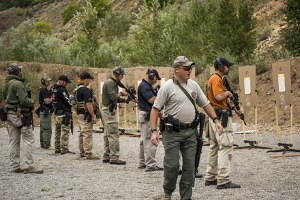 There are so many different types of “firearms instructors” that it’s virtually impossible to give a standardized answer to this question. In no way do I think I have all the answers to this question. The purpose of this article is to simply get instructors thinking about possible answers.
There are so many different types of “firearms instructors” that it’s virtually impossible to give a standardized answer to this question. In no way do I think I have all the answers to this question. The purpose of this article is to simply get instructors thinking about possible answers.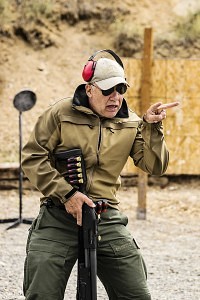 As I look at it, there are levels and stepping stones in your instructing career. Generally speaking, I would venture to say some of the best instructors have law enforcement (LE) and/or military backgrounds. However, I’m sure there are exceptions out there.
As I look at it, there are levels and stepping stones in your instructing career. Generally speaking, I would venture to say some of the best instructors have law enforcement (LE) and/or military backgrounds. However, I’m sure there are exceptions out there.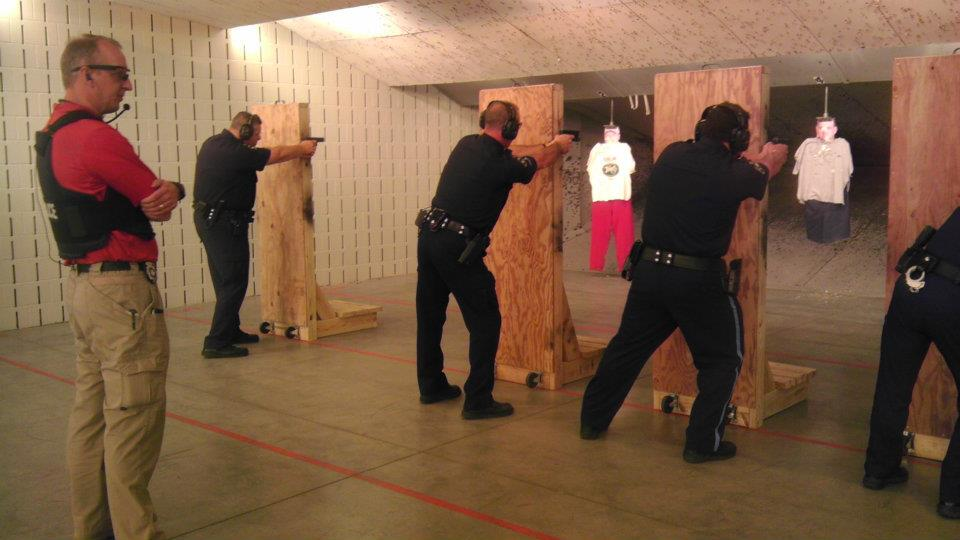 Since we are trying to define what a professional firearms instructor is, it seems the first place to start would be to discuss professionalism. As I said earlier, there are many types of instructors which will alter some of the requirements. To begin with, we owe it to our students and our industry to have a clean professional appearance and attire. If you’re honest with yourself, it’s hard to disagree with the idea of showing a professional appearance. It’s not difficult to wear a polo or other collared shirt. Wearing some sort of T-shirt or an untucked shirt just tells your students you’re sloppy and unprofessional.
Since we are trying to define what a professional firearms instructor is, it seems the first place to start would be to discuss professionalism. As I said earlier, there are many types of instructors which will alter some of the requirements. To begin with, we owe it to our students and our industry to have a clean professional appearance and attire. If you’re honest with yourself, it’s hard to disagree with the idea of showing a professional appearance. It’s not difficult to wear a polo or other collared shirt. Wearing some sort of T-shirt or an untucked shirt just tells your students you’re sloppy and unprofessional.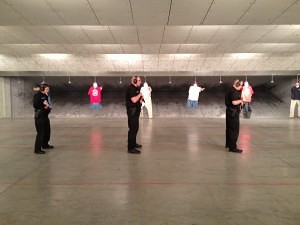 I have already mentioned that you can always learn something new. To do that, you need to continually reevaluate yourself as a firearms instructor. I put a date on all of my police recruit / instructor manuals to require myself to reevaluate the techniques, tactics, and gear every two years. If you haven’t changed any of your curriculum in more than two years, you have most likely rested on your laurels and are now becoming a liability. Be open to evaluating different techniques.
I have already mentioned that you can always learn something new. To do that, you need to continually reevaluate yourself as a firearms instructor. I put a date on all of my police recruit / instructor manuals to require myself to reevaluate the techniques, tactics, and gear every two years. If you haven’t changed any of your curriculum in more than two years, you have most likely rested on your laurels and are now becoming a liability. Be open to evaluating different techniques.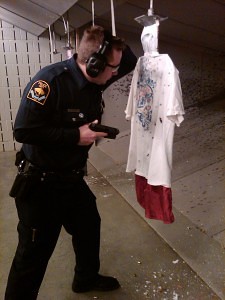 The worst thing a professional firearms instructor can do is to fail to vet a new technique, tactic, or piece of gear. Many times, I’ve watched an instructor go to a school or seminar, learn some new tactic, and come back to start teaching it as the “new coolest thing” in the world of shooting. Usually, within a few weeks or months, the instructor realizes the technique isn’t sound and may only work on flat, sterile ranges as opposed to real world situations. The problem is that the damage is already done. Every instructor is liable for what they have taught the students that have already completed the class. Good, professional instructors will vet any new technique before they go out and teach it to students. Consequently, they need to incorporate any changes into their lesson plans and stay consistent.
The worst thing a professional firearms instructor can do is to fail to vet a new technique, tactic, or piece of gear. Many times, I’ve watched an instructor go to a school or seminar, learn some new tactic, and come back to start teaching it as the “new coolest thing” in the world of shooting. Usually, within a few weeks or months, the instructor realizes the technique isn’t sound and may only work on flat, sterile ranges as opposed to real world situations. The problem is that the damage is already done. Every instructor is liable for what they have taught the students that have already completed the class. Good, professional instructors will vet any new technique before they go out and teach it to students. Consequently, they need to incorporate any changes into their lesson plans and stay consistent.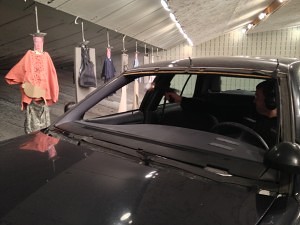 I still live by the old military adage we learned: KISS (Keep It Simple). We can drop off the last S. Trying to impress your students with big words only confuses the students and makes learning harder. There is no need to carry a dictionary on the range. It comes right back to the ego again.
I still live by the old military adage we learned: KISS (Keep It Simple). We can drop off the last S. Trying to impress your students with big words only confuses the students and makes learning harder. There is no need to carry a dictionary on the range. It comes right back to the ego again.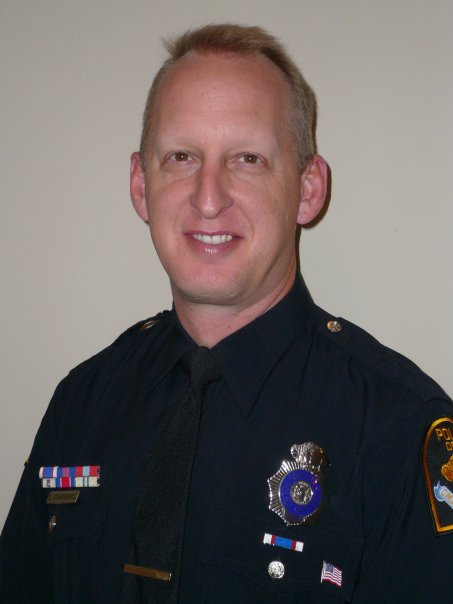 About Dave Staskiewicz
About Dave Staskiewicz 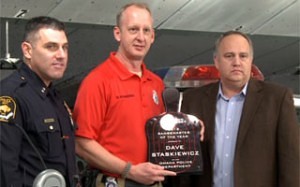 PROVO, Utah – Officer David Staskiewicz was recognized by
PROVO, Utah – Officer David Staskiewicz was recognized by  “Coordinating the fair use of all three ranges can keep you busy, but these facilities are an incredible training tool,” Staskiewicz said. “We have up to 25 local and federal agencies that train on one of our ranges throughout the year.”
“Coordinating the fair use of all three ranges can keep you busy, but these facilities are an incredible training tool,” Staskiewicz said. “We have up to 25 local and federal agencies that train on one of our ranges throughout the year.”
 When I bought my first handgun 20 years ago, there wasn’t a place to shoot it. There were hardly any shooting ranges in the area, and the ones that did exist required expensive long-term memberships. That really bothered me, so when my midlife crisis hit, I decided to build my own shooting range. I wanted to build a place where anyone could feel comfortable and enjoy the fun of target shooting. I wanted to build the kind of range I would have wanted to go to 20 years ago.
When I bought my first handgun 20 years ago, there wasn’t a place to shoot it. There were hardly any shooting ranges in the area, and the ones that did exist required expensive long-term memberships. That really bothered me, so when my midlife crisis hit, I decided to build my own shooting range. I wanted to build a place where anyone could feel comfortable and enjoy the fun of target shooting. I wanted to build the kind of range I would have wanted to go to 20 years ago.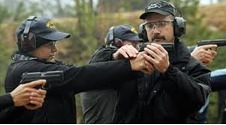 The main thing to remember when considering whether or not to form an engagement with
The main thing to remember when considering whether or not to form an engagement with 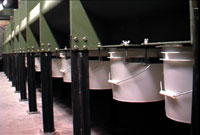 Time is money. The more time the range is shut down for service, the less money the range is making. In other words, each time a range has to shut down should be viewed as a potential loss of revenue. A range using a conveyor belt doesn’t have to shut down in order to service the trap because the conveyor is constantly collecting the fired rounds. When the range does shuts down for general maintenance, the workers don’t have to deal with clearing buckets and can better spend their time elsewhere.
Time is money. The more time the range is shut down for service, the less money the range is making. In other words, each time a range has to shut down should be viewed as a potential loss of revenue. A range using a conveyor belt doesn’t have to shut down in order to service the trap because the conveyor is constantly collecting the fired rounds. When the range does shuts down for general maintenance, the workers don’t have to deal with clearing buckets and can better spend their time elsewhere.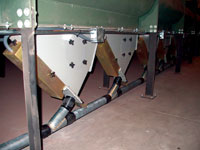 Contrarily, a
Contrarily, a 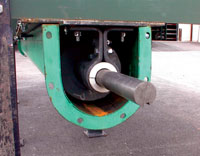 A final reason why the conveyor system is recommended in Total Containment Traps is safety. If a canister is allowed to overfill, the rounds will remain in the bullet trap and can potentially cause ricochet and/or clogging. Barrels can become filled with lead in as little as two weeks. The more the lead piles up, the bigger the safety issue. Range safety is critical and the screw conveyor system is the best choice for optimal safety.
A final reason why the conveyor system is recommended in Total Containment Traps is safety. If a canister is allowed to overfill, the rounds will remain in the bullet trap and can potentially cause ricochet and/or clogging. Barrels can become filled with lead in as little as two weeks. The more the lead piles up, the bigger the safety issue. Range safety is critical and the screw conveyor system is the best choice for optimal safety. Shooting on paper is a great way to sight-in rifles and score trainings, and is great for qualifications held by law enforcement agencies. Paper allows a shooter to see where shots land, illustrating how tight groups are. The
Shooting on paper is a great way to sight-in rifles and score trainings, and is great for qualifications held by law enforcement agencies. Paper allows a shooter to see where shots land, illustrating how tight groups are. The 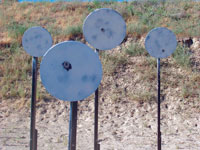 Just like in all athletic training, the body subconsciously remembers how to repeat or orchestrate all the different variables required for a successful movement, or in this case, shot. The ability that steel targets offer in regards to instantaneous feedback can actually enhance training, speed, and accuracy. This is especially important for tactical shooting scenarios with movement, such as moving plates and targets. Having multiple senses invoked during this training process conditions the shooter to become a more powerful and effective shooter.
Just like in all athletic training, the body subconsciously remembers how to repeat or orchestrate all the different variables required for a successful movement, or in this case, shot. The ability that steel targets offer in regards to instantaneous feedback can actually enhance training, speed, and accuracy. This is especially important for tactical shooting scenarios with movement, such as moving plates and targets. Having multiple senses invoked during this training process conditions the shooter to become a more powerful and effective shooter. Thanks again to everyone who participated in and helped make LETC 2011 a success! It is sincerely our privilege and honor to be able to work with the most dedicated, selfless, and hard-working members of the law enforcement community each year.
Thanks again to everyone who participated in and helped make LETC 2011 a success! It is sincerely our privilege and honor to be able to work with the most dedicated, selfless, and hard-working members of the law enforcement community each year.
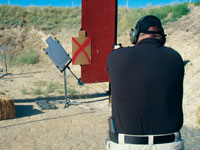
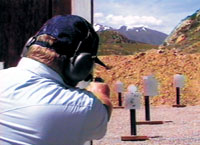
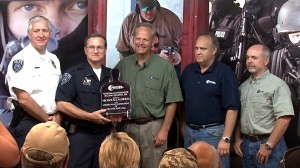 Rangemaster Roberts began his service in this field as an armorer and firearms instructor in 1978 for the Riverton City Police Department. In 1989 he was transferred to the Salt Lake County Sheriff’s Office Firearms unit. In 1990 through 1993 Roberts was promoted to Corporal of the Firearms Unit and served as the Firearms Unit Supervisor from 1993 to 1996. He has served as the director of the Firearms Unit and Rangemaster since September of 1996. He graduated from Session 192 of the F.B.I. National Academy in March of 1998 and is a Master Instructor for Colt LLC, Sig Sauer, Pepper Ball Tec., and Security Equipment Corp. (Sabre). As such, he protects officers throughout the country by teaching all over the United States to increase the knowledge of armorers and instructors. Roberts is also a certified NRA Instructor and was invited to Israel where he trained with I.M.I. and Sturm Ruger to develop a new police carbine.
Rangemaster Roberts began his service in this field as an armorer and firearms instructor in 1978 for the Riverton City Police Department. In 1989 he was transferred to the Salt Lake County Sheriff’s Office Firearms unit. In 1990 through 1993 Roberts was promoted to Corporal of the Firearms Unit and served as the Firearms Unit Supervisor from 1993 to 1996. He has served as the director of the Firearms Unit and Rangemaster since September of 1996. He graduated from Session 192 of the F.B.I. National Academy in March of 1998 and is a Master Instructor for Colt LLC, Sig Sauer, Pepper Ball Tec., and Security Equipment Corp. (Sabre). As such, he protects officers throughout the country by teaching all over the United States to increase the knowledge of armorers and instructors. Roberts is also a certified NRA Instructor and was invited to Israel where he trained with I.M.I. and Sturm Ruger to develop a new police carbine.